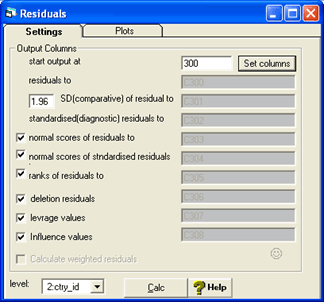

The mean is 1.643 (on the logit scale). To convert back from logit to probability use
e1.643 / (1+ e1.643) = 0.838
where 'e' is the exponential function.
So the overall proportion reporting that they turned out to vote in this sample is 0.838 (this represents an average turnout of nearly 84%). We know that in the actual elections a lower proportion turned out. Hence some people are reporting in the ESS that they turned out to vote in the most recent election when in fact they did not (and/or the sampling process has lead to an oversampling of voters). We can account for this partially by using weights. See, for example, the post-stratification approach as used by Fieldhouse, Tranmer and Russell (2007). ). For now we will continue with the figures as they are.
The country level variation is estimated as 0.299 on the logit scale, suggesting there is considerable variation between countries with respect to voter turnout.
We can save and plot the country level residuals from this model. Choose 'residuals' from the model menu.



And set the comparative s.d. as 1.96 and the level to be 2:ctry_id.

We get this 'caterpillar' plot. The residuals Uoj are plotted in ascending order of magnitude with their confidence intervals. Where this confidence interval crosses the 0.0 line the turnout for that country is not significantly different from the overall turnout in Europe. If the confidence interval is entirely below the dotted line the turnout is significantly lower for that country and if the confidence interval is entirely above the dotted line the turnout is significantly higher for that country. The plot is interactive -we can click on a residual to find out the country id. For example the first residual on the plot is country id 19 (Poland) and the last one is country id 11 (Greece).